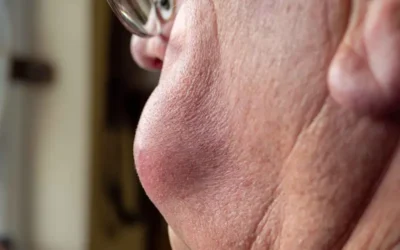Regarded as one of the most common and serious valve disorders, Aortic valve stenosis (also called aortic stenosis) occurs when the heart’s aortic valve narrows. The aortic valve – a key valve in the body’s blood circulation system – opens to allow blood to flow into the aorta – the main artery that carries blood out of the heart to the body. If you have aortic stenosis, this valve does not open fully and this abnormal narrowing makes it extremely difficult for blood to flow from the heart to the body and onward to the rest of your body. When the blood flow through the aortic valve is reduced or blocked, the heart needs to work harder to pump blood to the body, which can possibly weaken the heart muscles. Treatment for this heart condition depends on the severity of symptoms and may generally include surgery to repair or replace the valve. If left untreated, this condition can lead to serious heart complications. Medical billing and coding for aortic stenosis can be challenging for healthcare providers. Outsourcing to a reliable medical billing and coding company can help in timely claim submission and correct reimbursement.
As per 2018 reports, about 2.5 million people in the United States (over the age of 75 years) suffer from aortic valve stenosis – which is about 12.4 percent of the total population. It is estimated that this figure will increase at a high pace by the end of 2050. Aortic valve stenosis can occur due to several causes like – congenital heart defect, rheumatic fever and calcium buildup on the valves. Early diagnosis and timely treatment can help prevent the incidence of complications like – heart failure, stroke, blood clots, heart rhythm abnormalities (arrhythmias) and even death.
Does Aortic Stenosis Always Produce Symptoms?
Many people with aortic stenosis do not experience noticeable symptoms until the amount of restricted blood flow becomes significantly reduced. In most cases, the signs and symptoms develop when narrowing of the valve is severe. Signs and symptoms of this heart valve disorder may include –
- Breathlessness
- Chest pain (angina), pressure or tightness
- Feeling faint or dizzy or fainting with activity
- Palpitations or a feeling of heavy, pounding, or noticeable heartbeats
- Decline in activity level or reduced ability to do normal activities requiring mild exertion
- Heart murmur
- Fatigue, especially during times of increased activity
Potential risk factors associated with the condition include – age, history of heart infections, chronic kidney disease, history of radiation therapy to the chest and cardiovascular risk factors such as diabetes, high cholesterol and high blood pressure.
Understanding the Treatment Options
Several diagnostic imaging tests like – echocardiogram, electrocardiogram (ECG), cardiac computerized tomography (CT) scan, chest X-ray, cardiac MRI and cardiac catheterization may be ordered to determine the cause and severity of the condition.
Surgery to repair or replace an aortic valve is the major treatment option for this condition. Surgery options include – aortic valve repair, balloon valvuloplasty and aortic valve replacement. Cardiology medical coding involves using the relevant CPT codes as well as the ICD-10 codes on the medical claims submitted to health insurers for reimbursement.
CPT Codes
- 33361 – Transcatheter aortic valve replacement (TAVR/TAVI) with prosthetic valve; percutaneous femoral artery approach
- 33362 – Transcatheter aortic valve replacement (TAVR/TAVI) with prosthetic valve; open femoral artery approach
- 33363 – Transcatheter aortic valve replacement (TAVR/TAVI) with prosthetic valve; open axillary artery approach
- 33364 – Transcatheter aortic valve replacement (TAVR/TAVI) with prosthetic valve; open iliac artery approach
- 33365 – Transcatheter aortic valve replacement (TAVR/TAVI) with prosthetic valve; transaortic approach
- 33366 – Transcatheter aortic valve replacement (TAVR/TAVI) with prosthetic valve; transapical exposure
- 33367 – Transcatheter aortic valve replacement (TAVR/TAVI) with prosthetic valve; cardiopulmonary bypass support with percutaneous peripheral arterial and venous cannulation
- 33368 – Transcatheter aortic valve replacement (TAVR/TAVI) with prosthetic valve; cardiopulmonary bypass support with open peripheral arterial and venous cannulation
- 33369 – Transcatheter aortic valve replacement (TAVR/TAVI) with prosthetic valve; cardiopulmonary bypass support with central arterial and venous cannulation
ICD-10 Codes
- I35 – Nonrheumatic aortic valve disorders
- I35.0 – Nonrheumatic aortic (valve) stenosis
- I35.1 – Nonrheumatic aortic (valve) insufficiency
- I35.2 – Nonrheumatic aortic (valve) stenosis with insufficiency
- I35.8 – Other nonrheumatic aortic valve disorders
- I35.9 – Nonrheumatic aortic valve disorder, unspecified
Preventing this heart valve disorder involves incorporating several heart-healthy lifestyle changes into the patient’s life including – consuming a healthy and nutritious diet, maintaining a healthy body weight, getting regular physical activity, avoiding tobacco and managing stress. Women with aortic valve stenosis should consult their physician before becoming pregnant. Treating and managing patients with aortic stenosis can be quite challenging for cardiologists or other physicians. Outsourcing medical billing and coding tasks is a practical option for physicians to ensure appropriate care for their patients as well as accurate clinical documentation of the heart valve-disorder.



